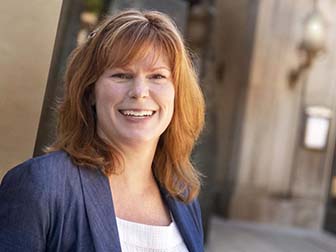When College of Education Dean Kimberly A. Lawless tells people, “We are changing education by educating for change,” she means it. More than words, this mantra has launched a new vision within the college to identify the needs in communities across the commonwealth and then work to meet them.
This drive has led to the design of the Teacher-in-Residence Program (TRP), a pilot program nearing launch in the Reading School District. The fourth-largest school district in Pennsylvania, Reading is a Title 1 school district (schools with 40% of the student population that comes from low-income households). Ninety-three percent of students in Reading qualify for free or reduced-price lunch and 25% of students are English-Language Learners.
“We have a huge teacher shortage here in Pennsylvania, and students are being negatively impacted by the fact that many of them are being taught by substitute teachers instead of certified teachers,” said Javier Lopez, director of strategic partnerships in the College of Education.
The number of emergency certified teachers in Pennsylvania has risen from 962 in 2015-16 to 2,178 in 2018-19, an increase of more than 126% in three years. The number of long-term substitutes in that same period increased by 113% to 2,152 from 1,009.
Many of those teachers have degrees in fields other than teaching and have been granted emergency temporary certification by the Pennsylvania Department of Education. For them to become long-term teachers, these substitutes must get their Pennsylvania teacher certification.
“We get requests for nontraditional routes to certification; some of these individuals are looking to shift careers, while others are finishing their undergraduate degree in another major but have had recent experiences that have ignited a passion for teaching,” said Greg Mason, director of the Advising and Certification Center in the College of Education. “While we have had some students complete certification requirements post-bachelors, the demand for alternative pathways has grown in my 10 years in the college.”
The TRP proposes to address that need with a unique, condensed curriculum that enables teachers on emergency license to earn their certification in just 15 months, while they are teaching. The shorter time to certification also makes the program more affordable.
Lawless is excited about the program, which she said will complement the portfolio already offered in the College of Education.
“Most of our teacher preparation and certification programs are geared toward the traditional undergraduate student population. This program is designed for a different demographic — people who are already in the classroom, already have degrees in another field and are working to become certified teachers,” Lawless said.
The program initially will focus on those teachers in the Reading School District with emergency certifications; long-term substitutes; and paraprofessionals interested in becoming teachers in the district.
Because teachers in these categories tend to live in the communities where they teach, they also tend to reflect their community’s rich demographic diversity.
“The goal of this program is to help increase teacher diversity and prepare teachers with an equity- and asset-based framework,” Lopez said. “This outcome would benefit the teachers, their students and the community as a whole.”
Lopez said research shows that students of color benefit from having teachers who look like them. “But one of the things that is not mentioned is every student in the classroom, including white students, benefits from a diverse teacher workforce,” he said.
The TRP is about more than just accelerated certification, however.



